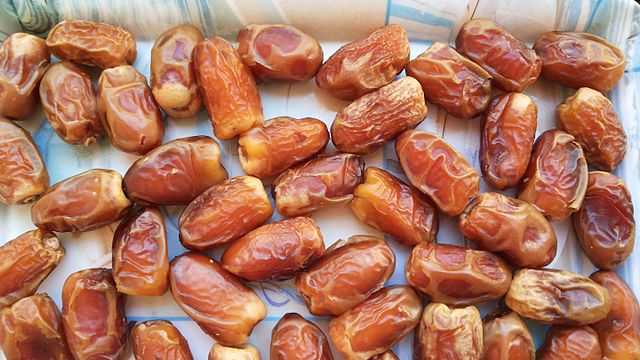With production at 1.6 million tonnes in 2024, the Saudi date sector has surpassed domestic self-sufficiency needs by 24%.
According to the Ministry of Environment, Water and Agriculture, the country’s yearly production self-sufficiency margin is now at 124%.
The ministry attributes the increase to governmental and affiliates’ efforts to boost palm date acreage to almost 165,000 hectares.
Riyadh, the capital region situated in the center of the country, leads annual output at 436,112 tonnes. Next is the Qassim Region, also in the center of the country, at 390,698 tonnes.
Following suit is Madinah in the southwest region along the Red Sea, with a production total of 263,283 tonnes. Not so far behind is the date oasis, the Eastern Region, with 203,069 tonnes for the year.
The fourth most productive region is the northwest, comprising Al Hail with 73,298 tonnes and Al Jouf at 65,200 tonnes. The Makkah area in the west of the country comes next at 40,095 tonnes.
Saudi Arabia is proud of its exotic produce and is keen to promote it locally. Indeed, just a few months earlier, the country had launched the Saudi Mango Festival on April 26 to promote local mangoes.
The government calls production highlights such as the above the “Harvest Season campaign.” Its aim is to reach out to customers to buy local produce, diversify fruit cultivation and promote small-scale farmers.
The Saudi date kernel comes from the desert date palm (Phoenix dactylifera), which grows in drained sandy soil. The drought-resistant tree espouses low moisture-consuming thin fronds for leaves.
Date palms in Saudi Arabia average 30 meters in height and grow mostly as single trees though sometimes they form clumps.
The biggest single production area in the world is the oasis of Al-Ahsa in eastern Saudi Arabia. As of 2018, the oasis had 3 million date palms, spread across 30,000 hectares.
In short, the Saudi date or tamr in the Arabic is experiencing a domestic surplus, aptly during the hot Arabian summer. And as the statistics below show, many national agricultural and cultural attributes relate to these fruits.
Saudi Date Statistics
Dates are synonymous with both the culinary habits and religious observances in the Islamic calendar. For instance during Ramadan, Saudis eat dates among other fruits first thing after breaking the fast. In terms of production, Saudi Arabia is one of the biggest date-producing countries, 2nd only to Egypt. According to FAOSTAT, annual output reached 1,610,731 tonnes in 2022, from 156,460 hectares.
How high is date consumption by the Saudis?
People in Saudi Arabia eat more dates than any other country, apart from Oman, on an annual basis. While Omanis ate 56.3 kg of dates per person per year in 2022, Saudis consumed more than 35 kg per capita the same year. In 2019, consumption was even higher in Saudi Arabia at 37.5 kg per person per year vis-á-vis Oman’s 55.8 kg per capita. In comparison, the worldwide table date consumption never went above 0.17 kg (170 g) per person per year between 2010 and 2021.
Does Saudi Arabia export dates?
According to the World Bank, Saudi Arabia ranked second by value after Tunisia in fresh or dried date exports in 2019, worth $229,832,810, totaling 182,317 tonnes. The country would retain the second position in 2021 after Israel in value, with exports worth $324,562,010, totaling 318,371 tonnes. Notably, some counties such as Iran (at 348,324 tonnes in 2021) export more quantity than Saudi Arabia but generate less income.
